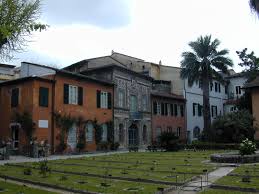
dal 1996 in continua innovazione tecnologica!
Sfrutta tecnologie avanzate per avere un sito web ottimizzato al 100%

It is the oldest European Botanical Garden which is made up of a university institution. The actual appearance differs considerably from the original one and the structures visible in the original conditions are: the ancient Institute with its characteristic facade decorated with shells and mother-of-pear; The pillars of the gate in front of it and decorated in a similar way; You're eight fountains with tub.
Since its inception, the Orto has played an important role in teaching activities and is now a source of material for Botanica courses as well as providing, with its collections, support for research programs directed at both biological, genetic and natural aspects, Both in pharmaceutical, veterinary and agricultural applications. In the part of the Garden located north of the Department of Botanical Sciences extends the arboretum where are grown trees belonging to the group of conifers and amentifers.
Outside the arboretum there are several trees of historical significance; In the Garden of Cedar live the two older specimens: a Magnolia grandiflora and a Ginkgo biloba, planted in 1787 by the prefect Giorgio Santi. A series of plants grouped together for families in the botanical gardens of the "Botanical School" allow to appreciate, according to a didactic-systematic criterion, the affinities between the various vegetable groups by comparing flower structures and in general morphological aspects.
In the area called "Orto del Mirto" for the presence of a spectacular locust of Myrtus communis, about one hundred and eighty species of officinal plants are cultivated, some used by the Italian pharmacopoeia such as castor and digital. Aquatic plants are a collection of predominantly native species that once characterized the Tuscan territory. Some of them, such as swamps, have disappeared from natural environments; Others such as the palatial ilibisco and the nannufero are at risk of extinction due to water pollution and water reclamation. There are also numerous exotic aquatic plants such as Victoria directed by Lindley.
The collection of Mediterranean geophytes collects herbaceous species mainly related to the Allium, Ornithogalum and Muscari genera from different areas of the Mediterranean basin and is the subject of cytotoxic and geobotanic studies. An entire greenhouse of the Botanical Garden is destined for the succulent species. They are housed in both species such as Cactaceae and Euphorbiaceae, as well as leaves of succulent specimens in Aloe and Agave genera.
A greenhouse with sophisticated equipment for controlling and adjusting the environmental parameters houses the collection of tropical species. Araceae, Bromeliaceae, Commelinaceae, Orchidaceae and some plants of food interest such as papaya, pepper, coffee, tamarind, passionflower and eugenia are cultivated. The small collection of Apuan species includes Apuana Biscutella, Centaurea arachnoidea and Alpine Daphne. The collection was made in agreement with the Apuan Alps Natural Park.
Italian Egyptian studies have long been a privileged place in Pisa. The collection includes herbaceous, shrubby and arboreal plants cultivated in ancient Egypt for food, pharmaco-cosmetic and industrial uses.
